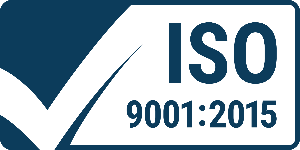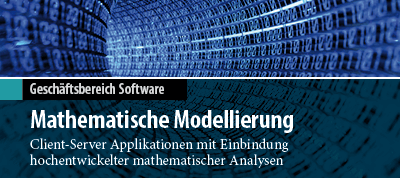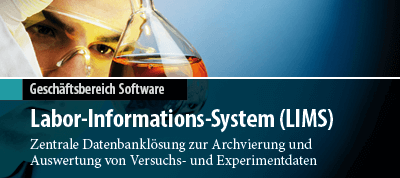GaussianView Features at a Glance
Features introduced since GaussView 6 are in blue.
Existing features enhanced in GaussView 5 are in green.
Examine Molecular Structures
- Rotate, translate and zoom in 3D in any display using mouse operations and/or a precision positioning toolbar
- View numeric value for any structural parameter
- Use multiple synchronized or independent views of same structure (customizable)
- Manipulate multiple structures as an ensemble
- Display formats: wire frame, tubes, ball & stick/bond type, space fill (CPK) style
- View per-atom labels for element, serial number, NMR shielding (when available)
- Visualize depth with fog feature
- Display stereochemistry info
- Highlight, display or hide atoms based on rich selection capabilities (optionally persistent)
Build/Modify Molecules
- Convenient palettes for atoms, functional groups, rings, amino acids (central fragment, amino- or carboxyl-terminated) and nucleosides (central fragment, C3'-, C5'-terminated, free forms)
- Custom fragment libraries
- Import standard molecule file formats:
- PDB, including ones created by AMBER. Optionally include/discard waters, apply standard residue bonding on PDB import.
- Gaussian input (.gjf and .com), output (.log), checkpoint (.chk and .fchk), cube (.cub), and frequency (.gfrq) files
- Sybyl .mol2, .ml2.; include/convert .mol2 lone pairs
- MDL files: .mol, .rxn, .sdf
- Crystallographic Information files: .cif
- Optionally include intermediate structures from optimizations, scans, etc.
- Accurately add hydrogens automatically or manually to an entire molecule or a selection
- An advanced open dialog, allowing options to be customized and retained across sessions:
- Reading intermediate geometries
- Using the bond table and weak bond inclusion
- Gaussian input & log file load orders
- PDB and .mol2 file settings
- Saving the formatted checkpoint file
- Modify bond type/length, bond angles, dihedral angles
- Rationalize structures with an advanced clean function
- Recompute bonding on demand
- Increase or decrease symmetry of molecular structure; constrain structure to specific point group
- Mirror invert structure
- Invert structure about selected atom
- Place atom/fragment at centroid of selected atoms
- Define named groups of atoms via:
- Click, marquee, & brush selection modes
- Complex filters combining atom type, number, MM settings, ONIOM layer
- Select by PDB residue and/or secondary structure (e.g., helix, chain)
- Expand selections by bond or proximity
- Use groups for display purposes and in Gaussian input
- Specify nonstandard isotopes
- Customize fragment placement behavior
- Specify custom bonding parameters
Graphical Setup for Specific Calculations
Specify input for complex calculations via simple mouse/spreadsheet operations:
- Build unit cells for polymers, 2D surfaces and crystals (periodic boundary conditions)
- Constrain to specific space group symmetry
- Assign atoms to ONIOM layers by
- Direct selection
- Bond proximity to specified atom
- Absolute distance from specified atom
- PDB file residue, secondary structure
- Complex selection criteria
- View/specify MM atom types and charges
- Add/redefine redundant internal coordinates
- Specify frozen atoms/coordinates during optimizations
- Set atom equivalences for QST2/QST3 TS optimizations
- Manipulate MOs: Select, rearrange/reoccupy orbitals for CASSCF, etc.
- Define fragments for fragment guess/counterpoise calculations
- Assign fragment-specific charges and spin multiplicities
- Include PDB data in molecule specification
- Select normal modes for frequency calculations
- Specify atoms for NMR spin-spin coupling
- Search for conformations using the GMMX add-on
- Full AMPAC integration if software is installed
Prepare and Run Gaussian Calculations
- Create input files via a menu-driven interface:
- Select job/method/basis from pop-up menus; related options appear automatically
- Supports all major Gaussian 16 features
- Convenient access to commonly-used general options
- Additional input can be entered; input sections in imported files are retained
- Preview input file before saving/submitting
- Select solvent and specify other parameters for calculations in solution
- Specify Link 0 commands
- Specify settings for multiprocessor and cluster/network parallel jobs
- Use calculation schemes to set up jobs from templates
- "Quick launch" Gaussian jobs with a single mouse click
- Molecule specification created automatically
- Optional connectivity section
- Monitor/control local Gaussian and utility processes
- Integrated, customizable queuing system
- Stream log files in a text-searchable window
- Initiate remote jobs via a script
- Generate job-specific input automatically
- PBC translation vector for periodic structures like polymers and crystals
- Orbital alterations
- Multiple molecule specifications for QST2/QST3 transition state searches
- Fragment guess and counterpoise per-fragment charge and spin multiplicity
- Apply calculation settings to a group of molecules with one click
- Save/submit identical jobs for a group of molecules in a single step, using unique file names
Examining and Visualizing Gaussian Results
- Select which jobs to open from multi-step results files
- Show calculation results summary, including basic information, optimization step data and thermochemical results
- Display results tables for a molecule group
- Examine atomic charges: numerical values, color atoms by charge, dipole moment vector
- Visualize atomic properties, predicted bond lengths and predicted bond orders
- Create surfaces and contours for molecular orbitals, electron density, electrostatic potential, spin density, NMR shielding density
- Display formats: 3D solid, translucent or wire mesh; 2D contour
- Color surfaces by a separate property
- Specify the desired contour plane
- Load cubes created by Gaussian; save computed cubes for future reuse; perform operations on cubes
- Animate normal modes:
- Indicate motion via displacement vector, dipole derivative unit vector
- Displace structures along normal mode
- Select subset of modes for display
- Save generated normal modes back to checkpoint file
- Scale frequencies
- Save animations as MP4 movies, with options for speed, aspect ratio, looping, time delay between frames and frames/loop
- Display spectra: IR, Raman, NMR, VCD, ROA, UV-Visible, etc.
- Select Harmonic and/or Anharmonic results
- Customize plot displays
- Display multiple data sets on a single spectra plot, with optional conformational averaging
- Substitute isotopes in frequency analysis
- Specify incident light frequency for frequency-dependent calculations
- Display results from Gaussian trajectory calculations
- View energy plot of conformational search result set
- NMR Results:
- Report absolute NMR chemical shifts or relative to reference compound
- Export NMR summary data as text
- Animate structure sequences: geometry optimizations, IRC reaction paths, potential energy surface scans, BOMD and ADMP trajectories
- Single play or continuous looping; play in reverse
- Save animations as MP4 movies, with options for speed, aspect ratio and frame & endpoint delays
- Plots of related data are also produced
- Display 3D surface plots for 2-variable scan calculations
- Customize plot and spectra displays by zooming, scaling, inverting, etc.
- Add molecular properties to plots
- Advanced plot customization; line color, canvas and background color, title, x- and y- axis settings, etc.
- Mixture Editor for multiple overlaid plots
- Save any image to a file (including customizations):
- Produce web graphics: JPEG, PNG and other formats
- Produce publication quality graphics files and printouts: TIFF, JPEG, vector graphics EPS
- Create images at arbitrary size and resolution
- Select full color or high quality grey scale formats
- Specify custom colors and/or background
- Save plots as images or textual data files
- Save animations in GIF, MNG, MP4 format or as individual frames
- Display PCM solvation cavity as a surface
Customize GaussView
Set/save preferences for most aspects of GaussView functionality:
- Control building toolbars individually
- Colors: per-element, molecule window background, surfaces, transparency
- Builder operation: atom and fragment join methods, adding hydrogens when needed, automated full or partial clean operations, etc.
- Gaussian 16 calculation settings
- Gaussian job execution methods
- Display modes
- Window placement and visibility
- Icon sizes
- File/directory locations
- Image capture and printing defaults
- Animation settings and movie defaults
- Clean function parameters
- Charge distribution display defaults
- Custom bonding parameters
- GaussView Tips facility
- Windows file extension associations
- Context sensitive help














